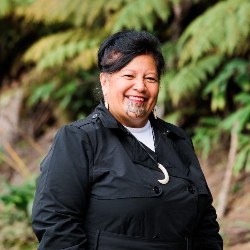Ruamāhanga water quality a focus for locals
Media Release
6 August
2013
For immediate release
Ruamāhanga water quality a focus
for locals
Ruamāhanga water quality grades released by the Ministry for the Environment and Greater Wellington Regional Council highlight the need to effectively manage land use to improve the quality of our freshwater resources.
Two reports have been released to provide an indication of potential health risks of popular river and swimming coastal sites; The Ministry’s National Indicator Snapshot report and the regional council’s annual On the Beaches report.
The Ministry’s report shows that the water quality in the Ruamāhanga River is ‘very poor’ based on all-weather water quality monitoring and faecal contamination risk assessments over the last five years.
The On the Beaches report presented the same information as the Ministry but also determined swimming grades for the region’s rivers during ‘dry’ weather conditions. The report found that the Wairarapa rivers are significantly affected by rainfall.
Only one of the twelve freshwater swimming sites received a poor grading in dry weather while seven sites register poor or very poor grades when it rains. During dry weather, sites in the middle and lower reaches of the Ruamāhanga River have interim grades of fair or poor due to the uncertainty around the risk from treated sewage discharges to health risk.
“It is very clear from these results that agricultural land use has a big impact on our waterways but urban areas are also significantly contributing to the contamination with sewage and stormwater discharges into the river,” says the regional council’s Environmental Wellbeing Committee Chair, Councillor Barbara Donaldson.
“Water-flows, plant life and algae, bird droppings, human litter and urban development can also cause problems for our waterways and can be managed effectively if we set our minds to it. But, a whole-of-community effort and long term commitment will be required if we are going to bring about the change we want – natural freshwater that does not pose a risk to health at any time.”
Water quality in the Ruamānanga catchment has been identified by the regional council as a significant issue and a new way of managing the regions catchments is being introduced.
“The council is establishing five Whaitua or zone committees that will use, a community based, collaborative process so locals can to create a unique vision and prioritised objectives for the management of land and water resources in their catchment. The Ruamāhanga Whaitua Committee is the first such committee to be established and its formation and progress is likely to set the pace and progress for other committees to follow,” says council Environmental Policy Manager, Jonathan Streat.
“The way we use or land and water resources across the region puts different pressures on these resources in different locations. Likewise the best ways to manage these pressures may be different in different catchments and it is at the catchment scale that these pressures are best managed”.
“Each of the five catchments in the region place different demands on land and water resources. We fully accept the need to modify what we do on land in order to effect a change and we believe that local people will know best how to do this.”
Applications for this committee are opening soon.
Councillor Donaldson says the reports provide motivation for us to act and draw a line in the sand to measure our progress against.
“Let’s get to it. Let’s all just roll up our sleeves and do what we have to in order to improve our lakes and waterways. We know there is a lot to be done and that it will take some time but, we also know we have to.”
Information on the establishment of the Ruamāhanga Whaitua Committee and a list of current beach grades and faecal contamination risks are available on the Regional Council website www.gw.govt.nz
The On the beaches
Report is available at www.gw.govt.nz/envreports/.
To find
out the Suitability for Recreation Grade for your local
swimming site, check out www.gw.govt.nz/beachgrades
ENDS
NOTE:
Further information on Wellington’s freshwater quality
monitoring follows
Greater Wellington Regional
Council popular river site monitoring
results
| River site | 2012/13 SFRG | Likely main source of faecal contamination |
What is the difference between the ‘all
flows’ and ‘dry weather’ SFRGs for
freshwaters?
‘All flows’ SFRGs for
freshwater sites are based on all routine water sample
results from the past five summers and consider potential
faecal contamination sources under all flow conditions.
‘Dry weather’ SFRGs are based only on results from
samples taken when river flows are at less than the median
and consider faecal contamination sources during dry weather
conditions. GWRC has determined ‘dry weather’ SFRGs
because the ‘all flows’ SFRGs tend to be heavily
influenced by high bacteria readings in waters samples
associated with wet weather. The ‘dry weather’ grades
better represent the potential health risk at times of low
or moderate river flow when swimming and other types of
recreation are most likely to occur.
How does
rainfall affect suitability for swimming?
Many
river and beach swimming spots are affected in wet weather
as a result of urban or rural runoff. In urban areas
rainwater collected from roofs, roads, car parks and other
surfaces is piped directly into rivers, streams and the
coast. During its travels, this stormwater picks up
sediment, rubbish, contaminants, and dog and bird droppings.
Sewer overflows can also occur in urban areas during wet
weather. In rural areas, excess rainwater flows over the
land and into nearby streams and rivers, picking up manure
and other contaminants along the way. At some river and
coastal sites, heavy rain and wind can churn up sediments
from the bottom of the waterway or sea, releasing pathogens
in the sediments back into the water.
What do the
grades mean?
There are five SFRGs, ranging from
‘very good’ to ‘very poor’. The potential risk of
becoming sick from contact with the water at a site
increases as the grading shifts from ‘very good’ to
‘very poor’.
Key to grades:
• Very good – the
site has generally excellent bacterial water quality and
very few potential sources of faecal pollution. Water is
considered suitable for swimming for almost all of the
time.
• Good – the site is considered suitable for
swimming for most of the time. Swimming should be avoided
during or following heavy rain.
• Fair – the site is
generally suitable for swimming, but because of the presence
of significant sources of faecal contamination, extra care
should be taken to avoid swimming during or following
rainfall or if there are signs of pollution such as
discoloured water, odour, or debris in the water.
•
Poor – the site is susceptible to faecal pollution and
microbial water quality is not always suitable for swimming.
During dry weather conditions, ensure that the swimming
location is free of signs of pollution, such as discoloured
water, odour or debris in the water, and avoid swimming at
all times during and for up to three days following
rainfall.
• Very poor – the site is very susceptible
to faecal pollution and microbial water quality may often be
unsuitable for swimming. It is generally recommended to
avoid swimming at these
sites.


 Gordon Campbell: On Iran Killing Its Rappers, And Searching For The Invisible Dr. Reti
Gordon Campbell: On Iran Killing Its Rappers, And Searching For The Invisible Dr. Reti Government: Saves Access To Medicines
Government: Saves Access To Medicines Office of the Speaker: Law And Order, Finance, And Defence A Focus For Ukrainian Parliamentary Delegation To NZ
Office of the Speaker: Law And Order, Finance, And Defence A Focus For Ukrainian Parliamentary Delegation To NZ Environmental Defence Society: Fast-track Approvals Bill Presents A Serious Risk To New Zealand Exporters
Environmental Defence Society: Fast-track Approvals Bill Presents A Serious Risk To New Zealand Exporters NZ Government: New Lab To Help Protect Key Pacific Tuna Fisheries
NZ Government: New Lab To Help Protect Key Pacific Tuna Fisheries Susan Botting - Local Democracy Reporter: Ruawai Leader Slams Kaipara Council In Battle Over $400k Property
Susan Botting - Local Democracy Reporter: Ruawai Leader Slams Kaipara Council In Battle Over $400k Property Te Pati Maori: Another ‘Stolen Generation’ Enabled By Court Ruling On Waitangi Tribunal Summons
Te Pati Maori: Another ‘Stolen Generation’ Enabled By Court Ruling On Waitangi Tribunal Summons


